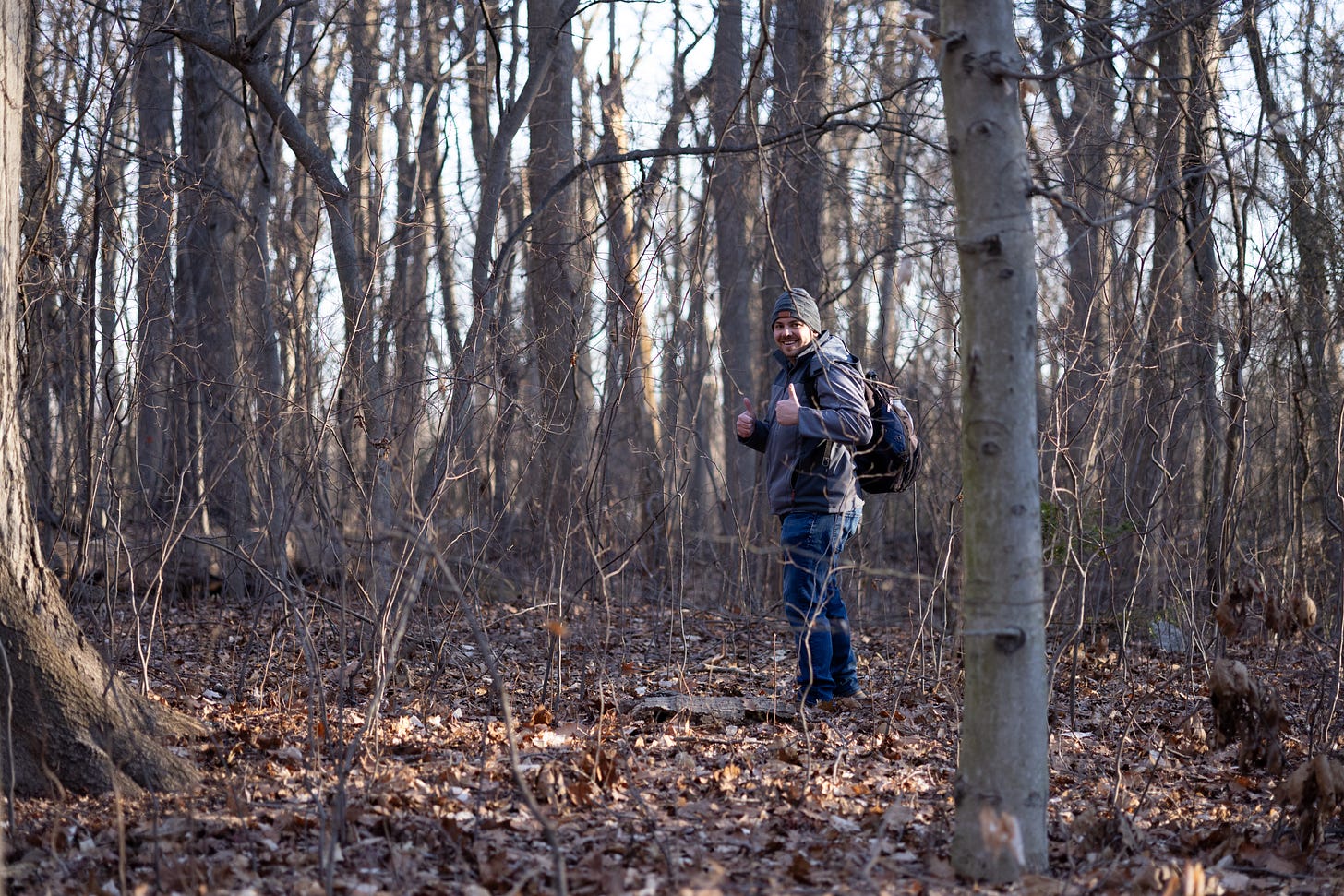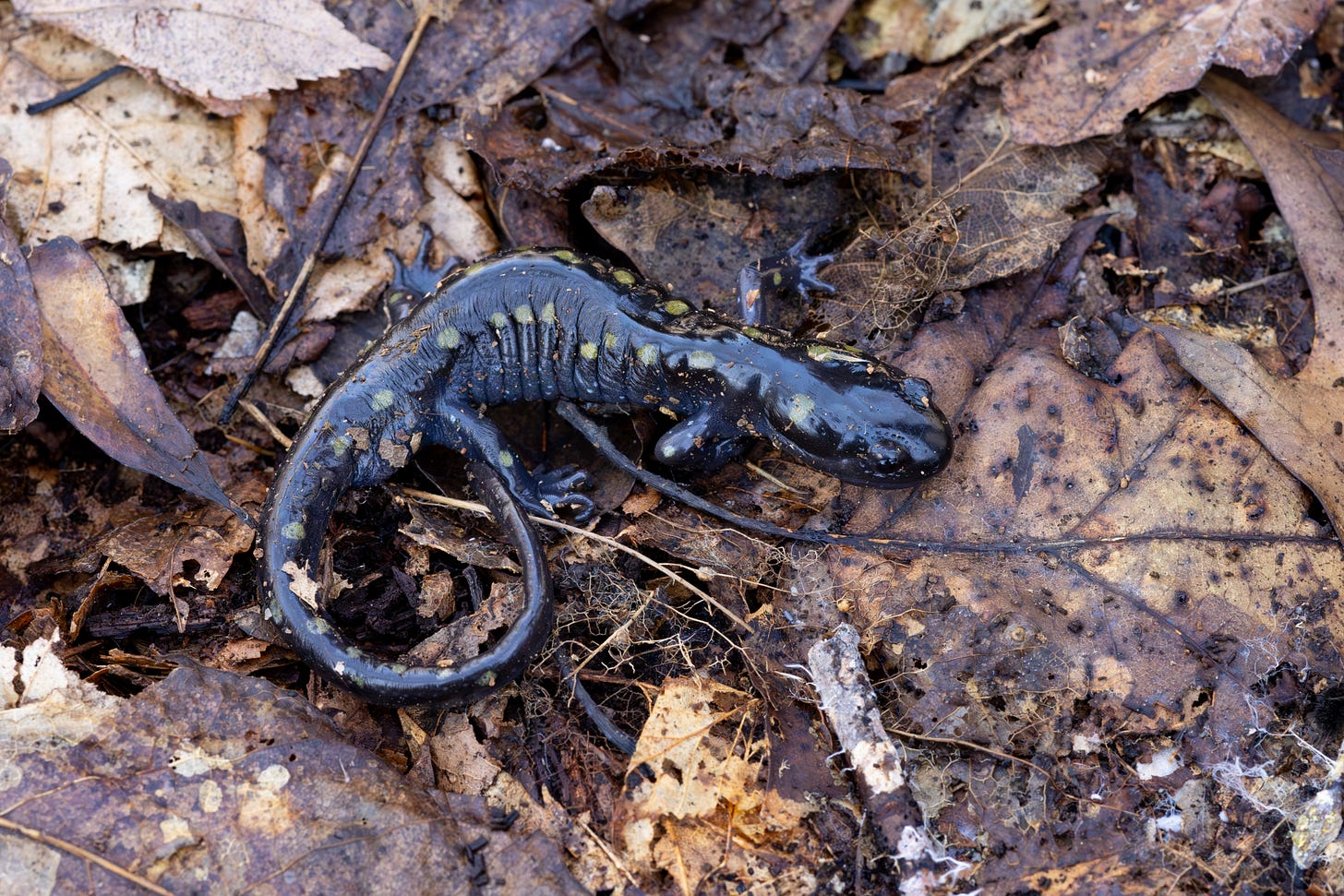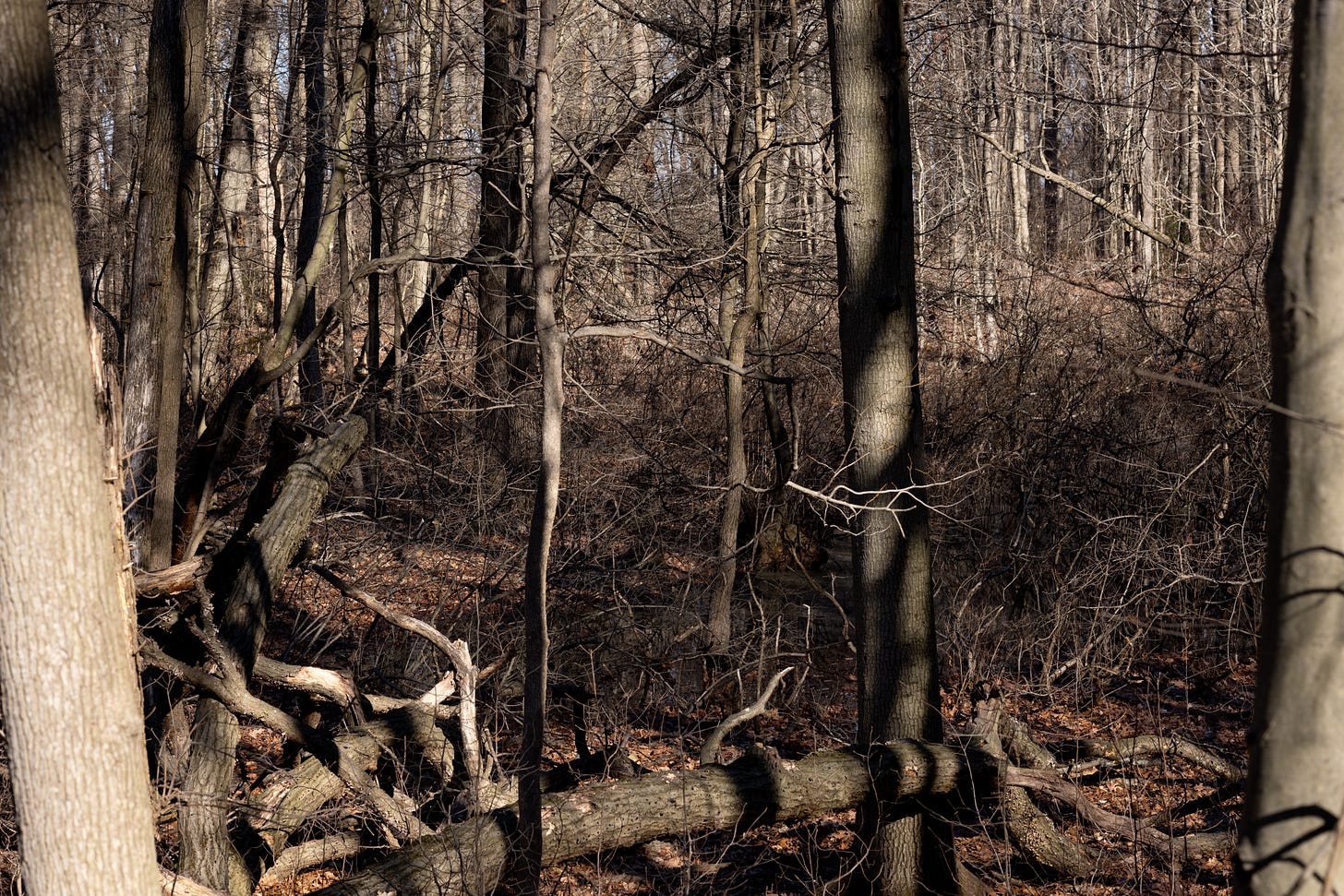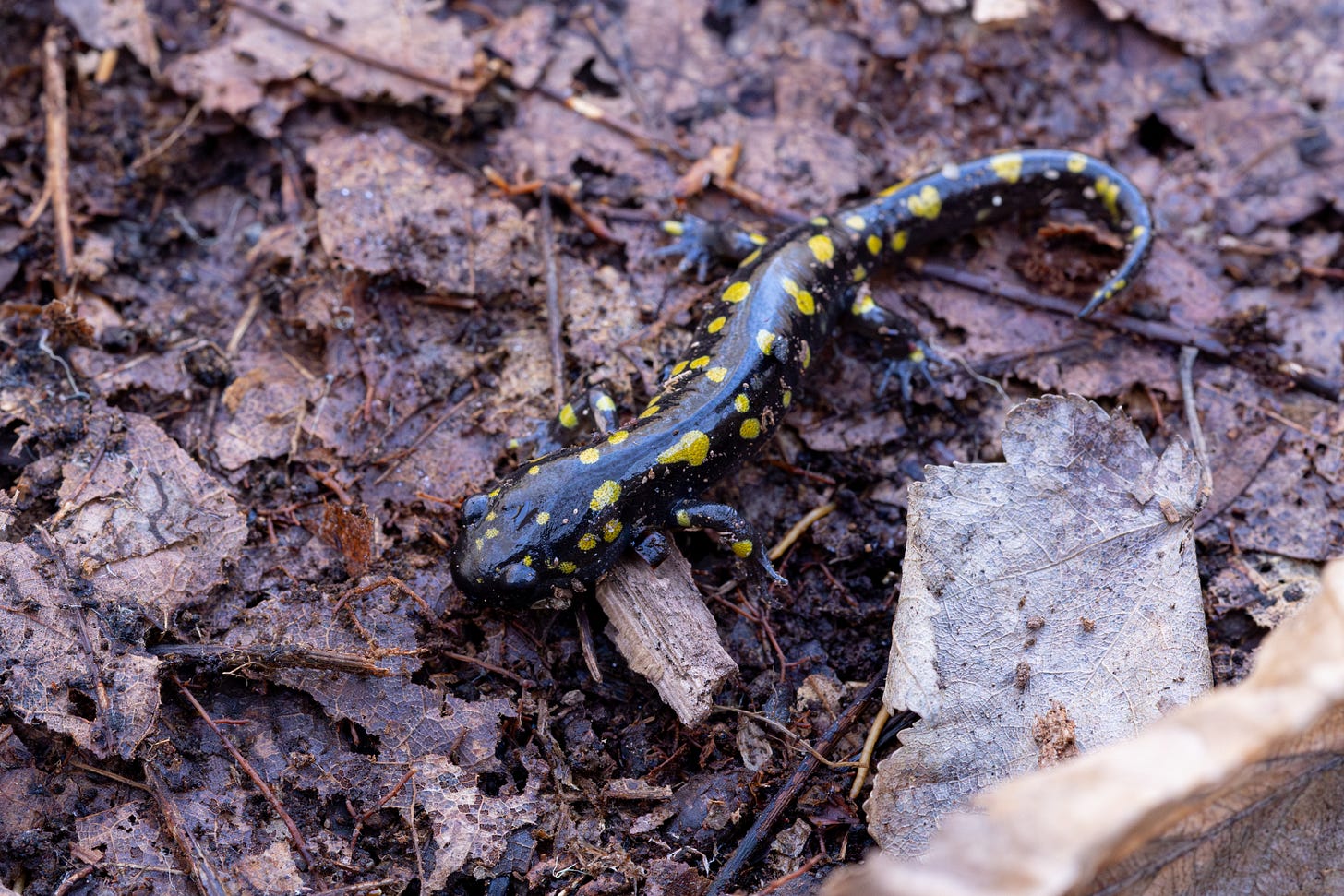prescript
thanks to all who came to my events this month—i was delighted by the turnout for our pigeon portraits and prose event, and so many people got to experience bird migration with me! reminder, you can buy my book here or ask for it wherever books are sold. i have some upcoming events, with a couple more brewing for the summer.
1: wings over wave hill, may 18. bird walk 9:30-11am, bird talk on how to document urban wildlife 4:30-5:30pm. all @ wave hill. free with admission to the grounds.
2: they blinded me with science bird drag, june 1. details tba, follow they.blinded.me.with.science on instagram!
—
last time, i decided that i was going to do a three-part series about the salamanders that live in new york city. while salamanders are among the most common animals in the eastern forest, new york city has very few of them. those that remain all have unique stories demonstrating the resilience and quirks required for an animal to survive in extremely altered habitat. check out part one here, and read on for part two.
—
remnants of the last ice age are everywhere in new york city, if you know where to look. ice-pushed boulders sit awkwardly in the marshes of pelham bay park, exposed bedrock in inwood features etched stripes from receding glaciers, and the spine of long island itself represents the rubble deposited at the outermost edge of the last ice age’s ice sheet. but it’s the most understated remnants, amounting to little more than puddles, that harbor the most interesting biodiversity—including the city’s most colorful amphibian.
enter the vernal pool, a kind of temporary forest wetland. the last ice age’s receding glaciers left behind chinks of buried ice throughout the northeastern united states, which melted and pockmarked the surface with depressions. some of these depressions fill annually with seasonal sources of water like melting ice and spring rains, then dry up as the year goes on. temporary ponds can’t support egg- and insect-eating fish, allowing a new kind of ecosystem to thrive, one dominated by amphibians and crustaceans.
a few weeks ago, some friends and i went searching for nyc’s spotted salamanders, creatures whose lives depend on these temproary landscapes. our ice age-carved city still features some vernal pools in the outer boroughs alongside their associated cast of characters—they just take a bit of extra effort to find.

spotted salamanders do not compute as eastern forest amphibians. their bright yellow spots make them look like poison dart frogs and they can measure a shocking seven inches from head to tail. yet they’re a common species east of the mississippi. not only do they like vernal pools, but alongside wood frogs, they’re often used as indicators of vernal pool health, like canaries in a coal mine.
these sallies live most of their lives underground in the forest and spend the winter in a hibernation-like state called brumation. but stretches of warm rain and warming temperatures in early spring triggers migration, where they awake and move from upland areas to vernal pools. this journey can span a quarter-mile. adults breed in the pool and then return to their feeding and sleeping grounds, while their aquatic larva mature and then metamorphose in the pool. when they’re ready (or when the pool dries up), the young, too, go find someplace else to live until the next year. in some places, the migration between the forest and the pool can be spectacular. you can check out jason bittel’s awesome newsletter on the subject here.
finding new york city’s spotted salamanders features less spectacle and more stress. we were welcomed at the suburban trailhead by a parade of off-leash dogs tearing through the woods, followed by their oblivious owners—some sort of deranged dog-walkers club. northbound bird migration had just started, but the early spring woods were quiet in the unusually high winds. we worried that the cold snap and less-than-predicted rain would keep the salamanders hidden.
my friends max, tim, and i spread across the leaf-litter beneath leafless trees uphill from the park’s pools, following proper flipping protocol by turning logs and rocks toward, rather than away from us and replacing them after a scan. this went on for an hour or two, with mostly photos of woodlice and worms to show for our efforts. while i have minimal herping experience, i started to feel like woodlice are to herping what bottle caps are to metal detecting.
but activity started picking up as the sun warmed the ground. a few eastern phoebes awoke, pumping their tails as they scanned for breakfast. a pair of wood ducks vocalized and watched us from high in a tree. we started finding some red-backed salamanders—not our target, but they instilled confidence that there were actually salamanders around. and finally, beneath a pool-side wooden board that felt like it was placed intentionally, max spotted two spotted salamanders and a red-backed salamander. he shouted for us and a photoshoot ensued, followed by some celebratory korean fried chicken.
the scale of habitat destruction has prevented vernal pool specialists from thriving in most of new york city—our vernal pools have broadly been replaced by city streets or other less-natural areas. after all, to the untrained eye, vernal pools are an easy target for filling, draining, and dumping. for a long time, new york state didn’t deem them large enough to receive protections as regulated wetland. they were an afterthought—who cares about a puddle?
but thankfully, things are changing for the health of these vernal pools and their inhabitants. just this past year, the state department of environmental conservation updated its regulations. previously, the state could designate wetlands, and then set up a 100-foot regulated area nearby. the new rule also allows for custom designations for vernal pools. after all, vernal pools form just part of the habitat. equally important is the connection to the upland forest where salamanders spend the rest of the year, as part of a broader patchwork of habitat types. so if the pool is especially important to breeding amphibians, they receive a protected area that also includes the adjacent upland areas used in the nonbreeding season.
as with the last salamander blog, i can’t offer such a rosy ending—while young spotted salamanders are capable of dispersing a few dozen meters, nyc isn’t getting any new populations without human intervention. but i can leave you with the reminder that new york city is part of the natural world, and the same natural forces that have shaped the eastern forests create similar ecosystems inside of the city. the result is that we still get to see some awesome animals within the city’s limits.





